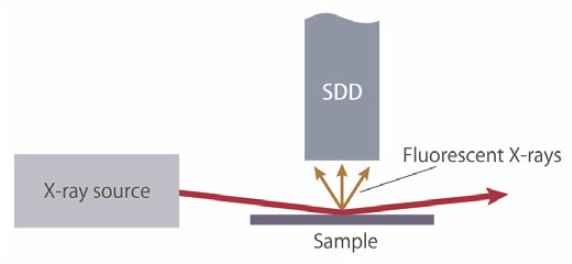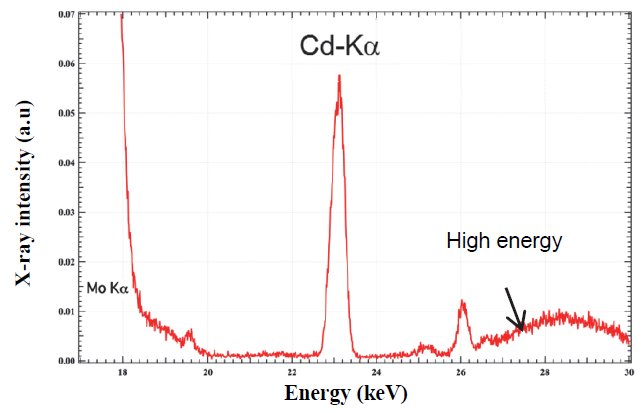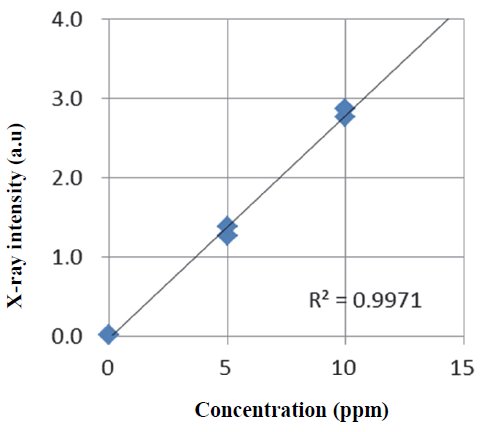Heavy Element Analysis with TXRF
Introduction
An incident X-ray beam impinges upon the sample at a shallow angle resulting in virtually complete reflection of the excitation beam away from the silicon drift detector (Figure 1). This affords dramatically reduced background contributions in the measured energy dispersive X-ray fluorescence spectra. In addition to the standard excitation such as Mo-K line (about 17 keV), heavy element measurement can be carried out using high energy excitation such as 30 keV.

Figure 1 : TXRF principle
Measurement and results
With a traditional direct excitation XRF spectrometer, it is difficult to obtain high signal-to-noise spectra for elements like palladium (Pd) or cadmium (Cd) due to high background intensities in the K-line energy range (20-24 keV) even with X-ray filter. However, with the TXRF technique, it is possible to reduce the background present in the measured spectra dramatically.
The sample, containing 1 ppm of Cd, was prepared by pipetting 10 µL of aqueous solution onto a glass substrate followed by drying. The spectrum of the TXRF measurement is shown in Figure 2 with clear peak of Cd-Kα on the lower background. In general Cd-Lα with the excitation by Mo-K line, it is known to be susceptible to overlap of other elements. On the contrary, Cd-Kα can be measured without overlap of other elements in this instrument.
The calibration curve was calculated from measurements on samples made by pipetting 10 µL of 5 ppm and 10 ppm respective aqueous Pd standards onto glass substrates followed by drying (Figure 3). A lower limit of detection (LLD) of 2 ppb was obtained from this curve.
 Figure 2: Spectra of 1 ppm Cd in the aqueous solution
Figure 2: Spectra of 1 ppm Cd in the aqueous solution

Figure 3: Calibration curve of Pd in the aqueous solution

Contact Us
Whether you're interested in getting a quote, want a demo, need technical support, or simply have a question, we're here to help.
